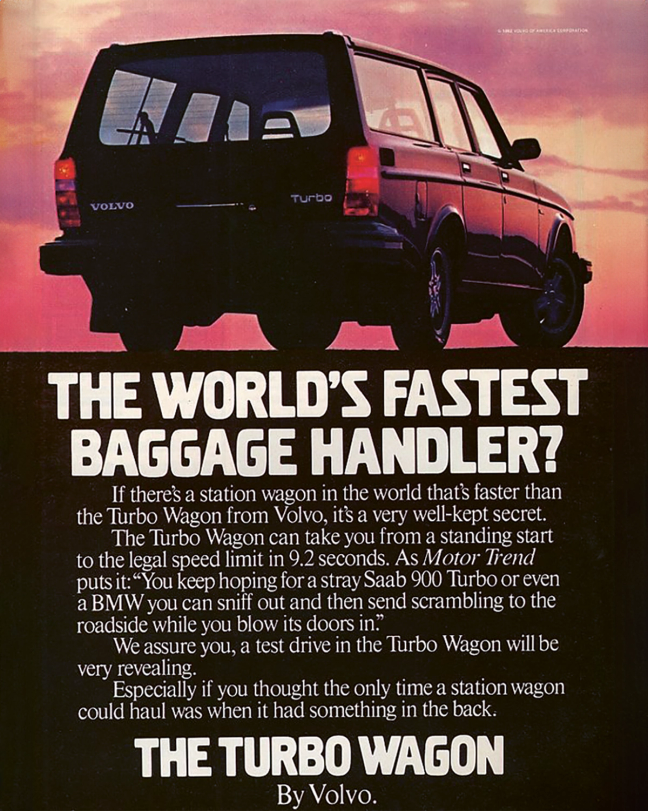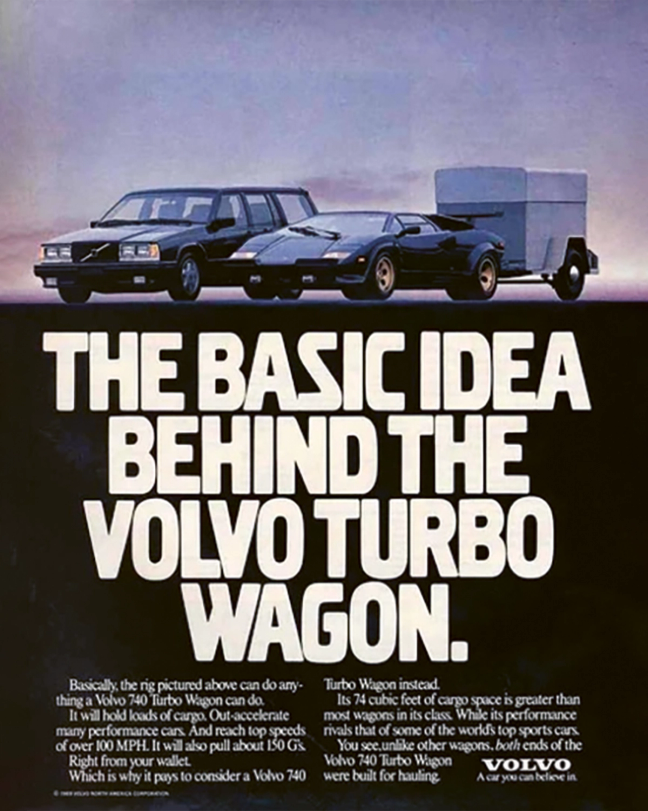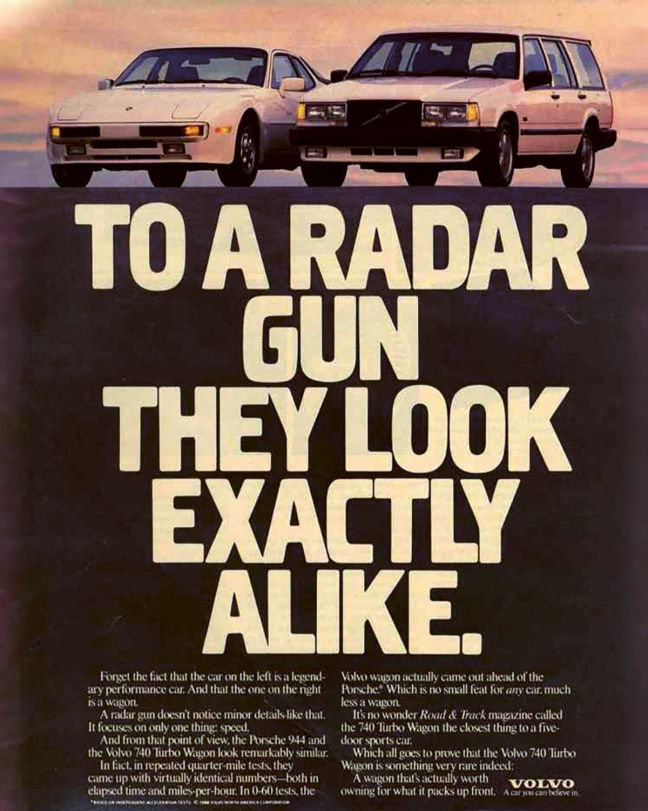The death of the Volvo estate
Of all the strata in the prep school jungle – the many, shifting echelons that spanned from ‘child with every single Pokémon card and a tuck-shop budget’ to ‘large boy who collects leaves and knows a lot about the gulags’ – none, to me, was higher than this: ‘kid whose parents have a forest-green Volvo estate with the backwards-facing boot seats.’ This was the high-water mark of upper-middle-class, late-1990s country house chic (which is, itself, surely, the high-water mark of modern culture).
Forget the dads who rolled up on Friday afternoons in their midlife-crisis Astons and desperate Oakleys; forget the Bullmores, with their aged Renault Megane Scenic with one (just one!) sunroof and a tape deck that only played Billy Joel’s Greatest Hits side two. The Volvo estate was what you wanted: a four-wheeled moodboard of waxed jackets, handsome dogs, well-knocked-in cricket bats, roof-mounted skis and beautiful mothers. It was understated and pragmatic; worldly and Scandinavian and preppy. It was always the boarders, with their exotic Wiltshire homes and flourishing abandonment issues, whose parents had them; never the lame, soft, coddled day-kids like me.

You could get 72 labradors/Downe House girls in a Volvo’s cavernous back end, or host a barbecue at prize-giving from its hind fender. Friends had their first kisses in those backwards-facing jump seats. Some models even had little phones to communicate from the boot to the driver. I once slept in a gold-toned version after a 21st birthday – the seats folded completely flat, like Emirates First Class with alcohol poisoning. How funny it is that certain things lodge in your mind at such a young age; little, highly specified status symbols that you end up chasing unconsciously for the rest of your life.
When I dream now of owning a country house, it’s not because I want a big home with a swimming pool and a tennis court and an orangery and an ornamental pond. It is because I want a Volvo estate to crunch across its broad gravel driveway and down its winding boulevards. One of the few consolations of having kids, I often think, is that they’re a decent excuse for buying a 1998 850 Turbo on eBay. (That, and it’d be good for someone to maintain the country house when I’m gone.)

Imagine my disappointment, then, when I read last August that Volvo was to cease the sale of all its estate models in the UK with immediate effect. SUVs and ‘crossovers’ were far more popular, a spokesperson said (I tracked him down personally), and better reflected modern tastes and lifestyles. Plus, something about electric cars, etc etc, and quite right, too. But it does feel like something has been lost when the king of estate car makers quits making estate cars – like Pizza Express culling the American Hot. Volvo pretty much invented the family estate when it introduced the 200 Series in 1974: a hefty, beautifully blocky number which was said to be adored by antique dealers – surely the apex demographic – for its 1,200 litres of boot room. It was nicknamed ‘the brick’ for its chunky, ‘built like a mid-century Danish credenza’ styling, but also for its solidity and strength: in 1976, the National Highway Traffic Safety Administration used it as the highest possible benchmark for road safety in the US. (Its nickname morphed into the ‘flying brick’ when the 240 Turbo won both the European Touring Car Championship and the German DTM, much to the surprise, it seems, of even Volvo.)

A 1988 advert for the Turbo Wagon shows the car gleaming on some futuristic road. Next to it is a Lamborghini trailing a horse box. “The basic idea behind the Volvo Turbo Wagon,” read the headline – here was a supercar you could move house in, basically; what tyre-kickers call a ‘sleeper’ for the raucous power hidden beneath its modest exterior.
Then came the 850 (and the later V70, which was slightly softer at the edges), which solidified the Volvo estate as a design classic, not least for its near vertical back end, which was straight and true and created the sense, to my seven-year-old brain at least, that one was sitting not in a car but a sort of modernist panoramic living room, only one where you could practise the new, exciting hand gestures your older brother had taught you on the bemused drivers behind.
In Chuck Klosterman’s recent book The Nineties, the writer argues (with a typical Gen-X shrug) that the 1990s was the last decade that is distinct and clear in our cultural memory, and also the period when everything that’s going on now – the internet; political polarisation; a splintering and blurring of culture – really kicked off. Decades, he also argues, never end when we think they end. Reading in the book about early internet chatrooms and Blockbuster video, I felt the same twinge that I did when I heard the news of the Volvo estate’s demise. A small, esoteric thing that maybe wasn’t at all perfect has gone, in favour of something more efficient and broader in appeal; more clinical, more modern, more impersonal. SUVs and crossovers are much safer and better for the environment than old, boxy estate cars. They also tend to look largely the same – a sort of international, indistinct curviness. (A great 2021 article by Road & Track magazine challenges people to tell the difference between de-badged Hyundais, Acuras, Volvos and BMWs. They can’t.) Safety and greenness are obvious benefits, of course (though I have heard the joke that, if you have enough kids to fill up a Volvo estate, you won’t notice losing a couple anyway).

But something is lost in the bargain, too; something almost too inconsequential to be mourned, and all the more poignant for it. Wasn’t the sensory experience of a trip to Blockbuster (including the family arguments, and that artificial scent of popcorn) far superior to the mindless scroll and indecision and double-screening of Netflix? Isn’t a precarious, backwards-facing jump seat more joyous than an injection-moulded curvilinear interior? And will any seven-year-old today be set on a lifelong journey of status anxiety and aesthetic snobbery by the tail-lights of a new Volvo XC90 plug-in hybrid?
This feature was taken from Gentleman’s Journal’s Winter 2023 issue. Read more about it here.
Want more motoring content? We rally a mutant Porsche 911 through a frozen Finnish forest…

Become a Gentleman’s Journal Member?
Like the Gentleman’s Journal? Why not join the Clubhouse, a special kind of private club where members receive offers and experiences from hand-picked, premium brands. You will also receive invites to exclusive events, the quarterly print magazine delivered directly to your door and your own membership card.